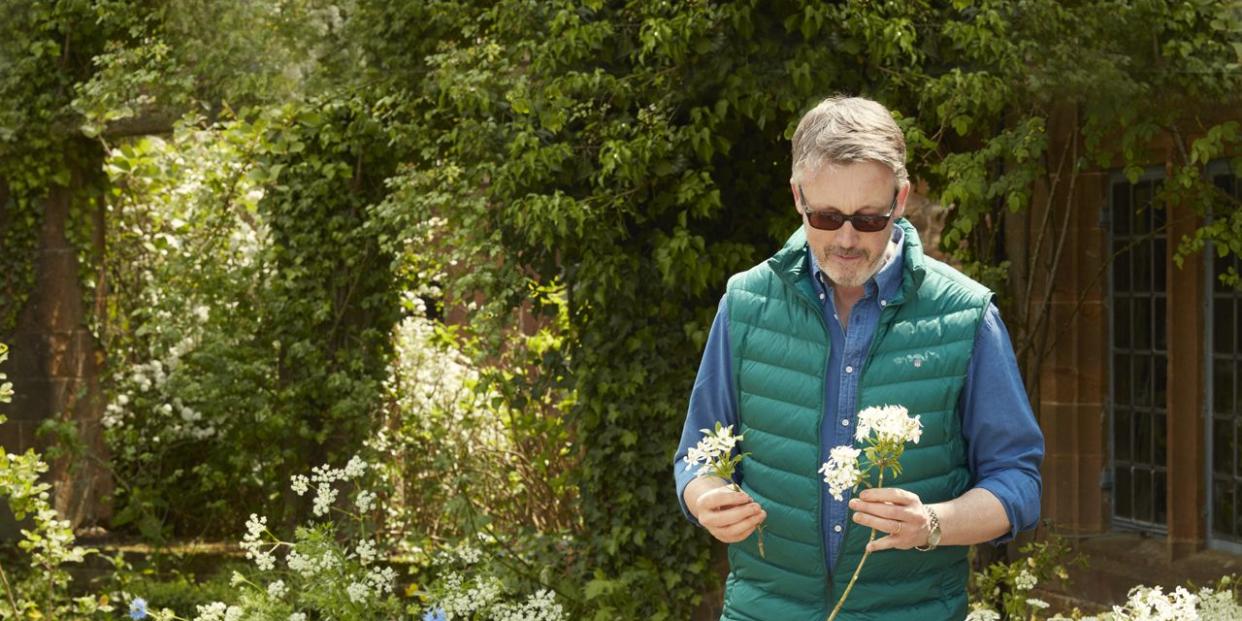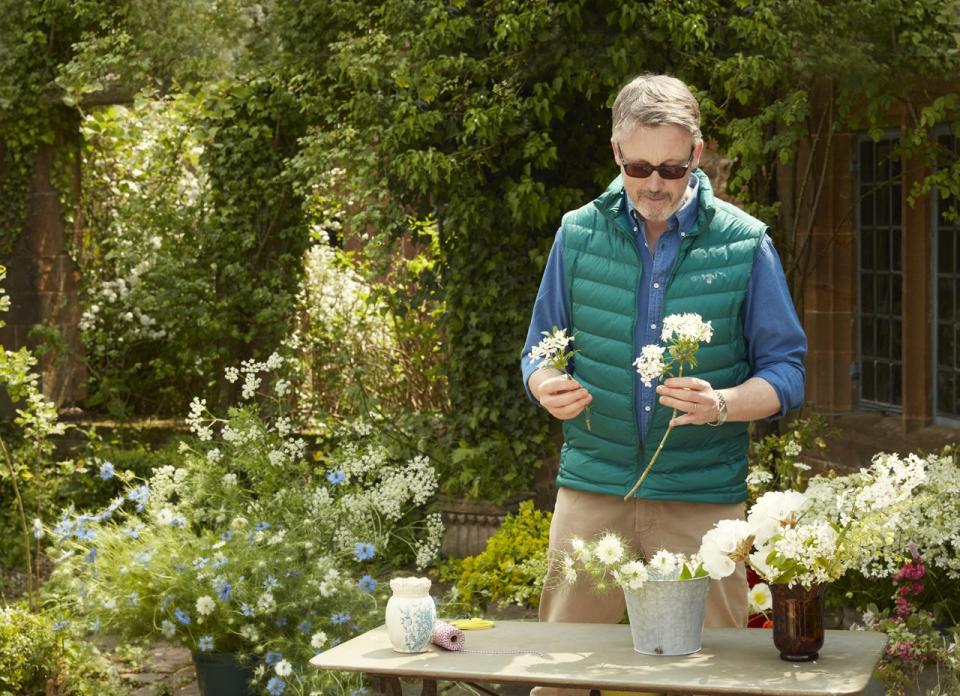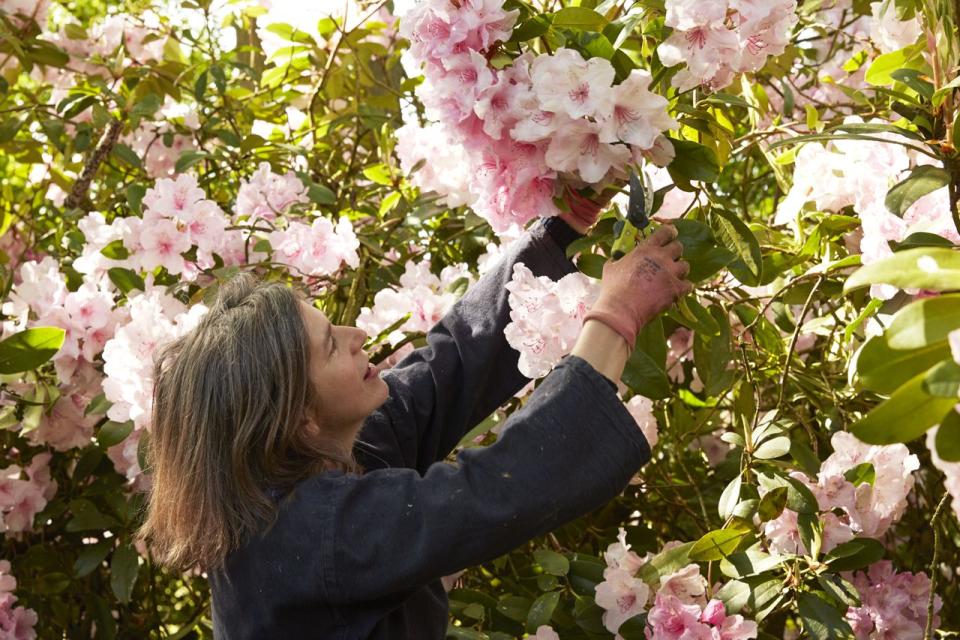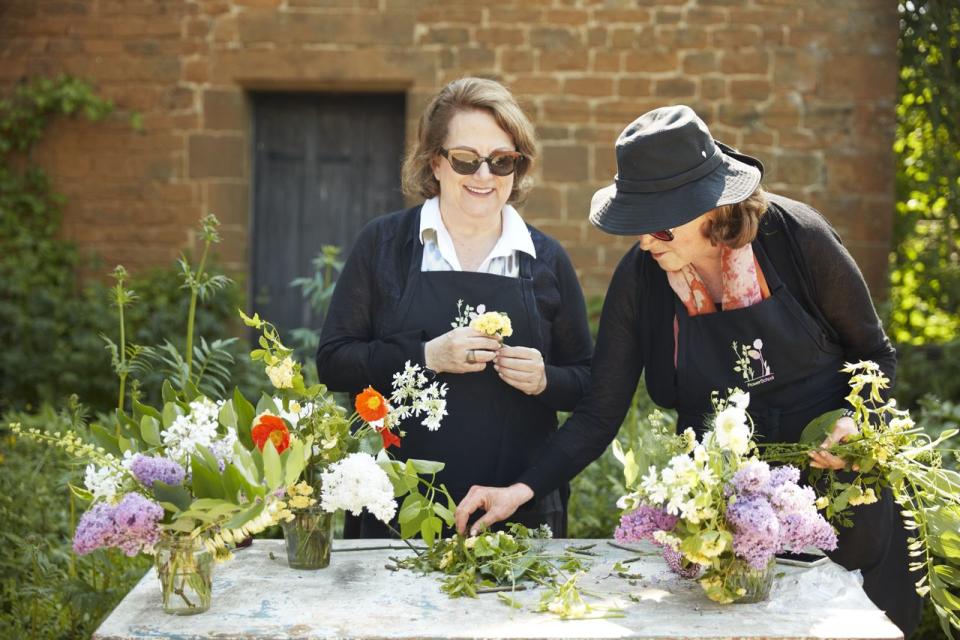Royals Florist Shane Connolly Shares His Top Tips for English-style Floral Arranging

"The perfect garden is one whose owner died six months ago,” says Shane Connolly from behind an iron worktable. At his feet are a dozen buckets spilling with rhododendrons and white lilacs, Banksian roses, and wild sweet pea. A 17th-century Jacobean manor house half-shrouded in wisteria is behind him. “The best gardens are planned,” he clarifies, “but let nature do its thing.”

I’m one of eight students in his courtyard classroom in Oxfordshire, England. He pulls from the buckets as he speaks, arranging the stems into a network of twigs in a low, round bowl. Floral foam and chicken wire, he reasons, are the Spanx of the garden world. “Why do you need to control everything?” he asks.
It’s like having Edward Hopper teach you how to paint. Connolly holds two royal warrants, designed the arrangements for Catherine Middleton’s wedding to HRH Prince William, and has authored five books on the art of floral arranging. I’ve joined him at Wardington Manor, an organic flower farm where he is midway through a weeklong curriculum with FlowerSchool New York. It’s part of the school’s travel program and their first foray in Great Britain. And Connolly has a lesson for everything.
Some of the most illuminating are on foot, as we begin the day with a tour of the grounds. What nature has displayed together, he explains as we walk, is a good guide to what you should arrange together. Wardington was built on the site of a former nunnery and is owned today by Bridget Elworthy, a friend of Connolly’s and one half of the founding duo who make up The Land Gardeners. Along with educating on soil health, she and business partner Henrietta Courtauld grow the organic flowers around us. They’ve arranged the first of two gardens not in rows, but as a meandering path. As we follow it, Connolly picks and pulls from bushes and trees. “Don’t be scared to cut from your garden,” he advises us, wrestling a handful of pink weigela branches from its bush. “The plants are stronger for it.”

It is a beautiful, high-60s day in May and the sun is warm as we settle at a stone-and-pebble courtyard. Sitting in wood-slatted folding chairs, we watch Connolly go to work. Everyone is enraptured. He has this presence, always pulling from a bucket, never second-guessing anything, not a moment’s pause in his lessons. “Cut stems at the join so they fall naturally,” he tells us. “They should arrange themselves in death as they do in life.”
His guidance is rapid-fire and captivating and continues through lunch, which is served in a cozy, paneled dining room brightened by collections of Chinese export, white table linens, and botanical prints. We speak over lit candles and dine on roasted salmon, potatoes, and flourless chocolate cake. A giant urn filled with Queen Anne’s lace spills from a sideboard behind us, like a still life illustration of another of Connolly’s principles: Flowers should feel right in their setting, as if they could have been picked in the garden outside. Even if I hadn’t spent the morning strolling the fields, I would know these blooms were right at home here.
Back in the courtyard, we put to task what we’ve learned. We go wild, pulling flowers from the buckets, grabbing bundles of blue and white nigella and rambler roses, Tellima and poppies in shades of red, orange, and white. I begin with a framework of twigs (Spanx, I now know, have no business in the English countryside) and fill in with white lilacs. When Connolly notices me struggling with the weight of the lilacs, he reminds me of the power of two. Once you pair it, he advises, it will come together. I leave it alone and add in pink hawthorn, which sort of floats over the lilac, filling the gap.

As I work in some poppies and nigella, I peer around at the others tidying their arrangements: a genial pair of sisters, longtime friends, and one or two who made the trip solo. There happens to be no novices here (they’re all FlowerSchool veterans), and I grew up with a decent measure of knowledge, watching my parents work in their garden. In the midafternoon sun, with Connolly’s lessons ringing through the courtyard, the shared passion among us is almost tactile. “Don’t force anything,” he reminds us. “Just pay attention to what nature has paired and let them hang together.”
You Might Also Like

